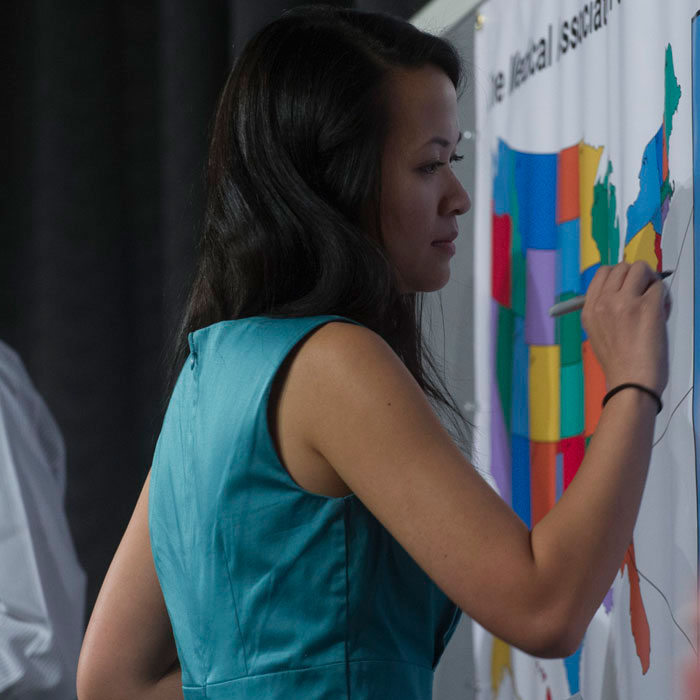“I’m thrilled,” Vanlandingham said. “I've been working the whole last year to make myself competitive for this specialty, and it’s a good feeling of accomplishment to see it work out.”
The 2013 graduating class of the UAB School of Medicine continued a strong streak at Match Day, with 97 percent matching in a post-graduate position to continue their medical studies. More than 52,000 applicants at medical and osteopathic schools around the country competed for 26,392 residency positions this year, said Laura Kezar, M.D., associate dean for students.
Match Day began in 1952 and is coordinated by the National Resident Matching Program, which provides an impartial venue for matching residency programs with medical students and independent applicants, including graduates from international medical and U.S. osteopathic schools. Following graduation from medical school, new physicians spend at least three years in a residency program, receiving advanced training in their chosen field.
At UAB, students receive their match envelopes and, after first reading the contents privately, declare their program and location to the crowd of fellow students, parents and loved ones.
Lydia Marcus, who matched in child neurology at UAB, said she felt unbelievable after being matched with her top choice. She said she applied at four programs near Auburn University, where her husband is a professor.
“It was really amazing,” she said of opening her envelope. “It was four years of really hard work culminating in one moment.”
UAB students matched with 77 institutions in 31 states. Seventy-five percent of students matched with program in the Southeast United States, and 40 percent of the 2013 class will stay at residency programs in Alabama; last year, 78 percent matched in the Southeast and 42 percent stayed in Alabama.
Kezar said 42.4 percent of the class will pursue careers in primary care, which includes internal medicine, family medicine, pediatrics and a combined program for medicine and pediatrics. This furthers UAB’s commitment to producing primary care physicians to offset a shortage.
“We had another great year for primary care,” Kezar said. “That is an important part of our mission here at the UAB School of Medicine, so we're very proud of that. It's been consistent over the past 10 years or so.”
 U.S. News & World Report recently ranked UAB 10th in the country for primary care.
U.S. News & World Report recently ranked UAB 10th in the country for primary care.More than 13 percent of students matched in surgery and surgical subspecialties, 8.8 percent in anesthesiology, 7.1 percent in obstetrics and gynecology, 5.3 percent in emergency medicine, 2.9 percent in neurology, 2.4 percent in dermatology and 2.4 percent in psychiatry. Students also matched in other internal medicine specialties, such as ophthalmology, physical medicine and rehabilitation, pathology, radiation oncology, pediatric neurology and nuclear medicine.
Michael Chestnut was excited about his staying at UAB for his anesthesiology residency. Chestnut’s father, David, is a former chair of Anesthesiology at UAB, where his brother, John Mark, is a resident in Emergency Medicine.
Chestnut said the UAB connection was not planned, but that it was neat it turned out this way.
“My brother and my dad went to medical school at UAB, so it’s nice for us to share that,” he said.